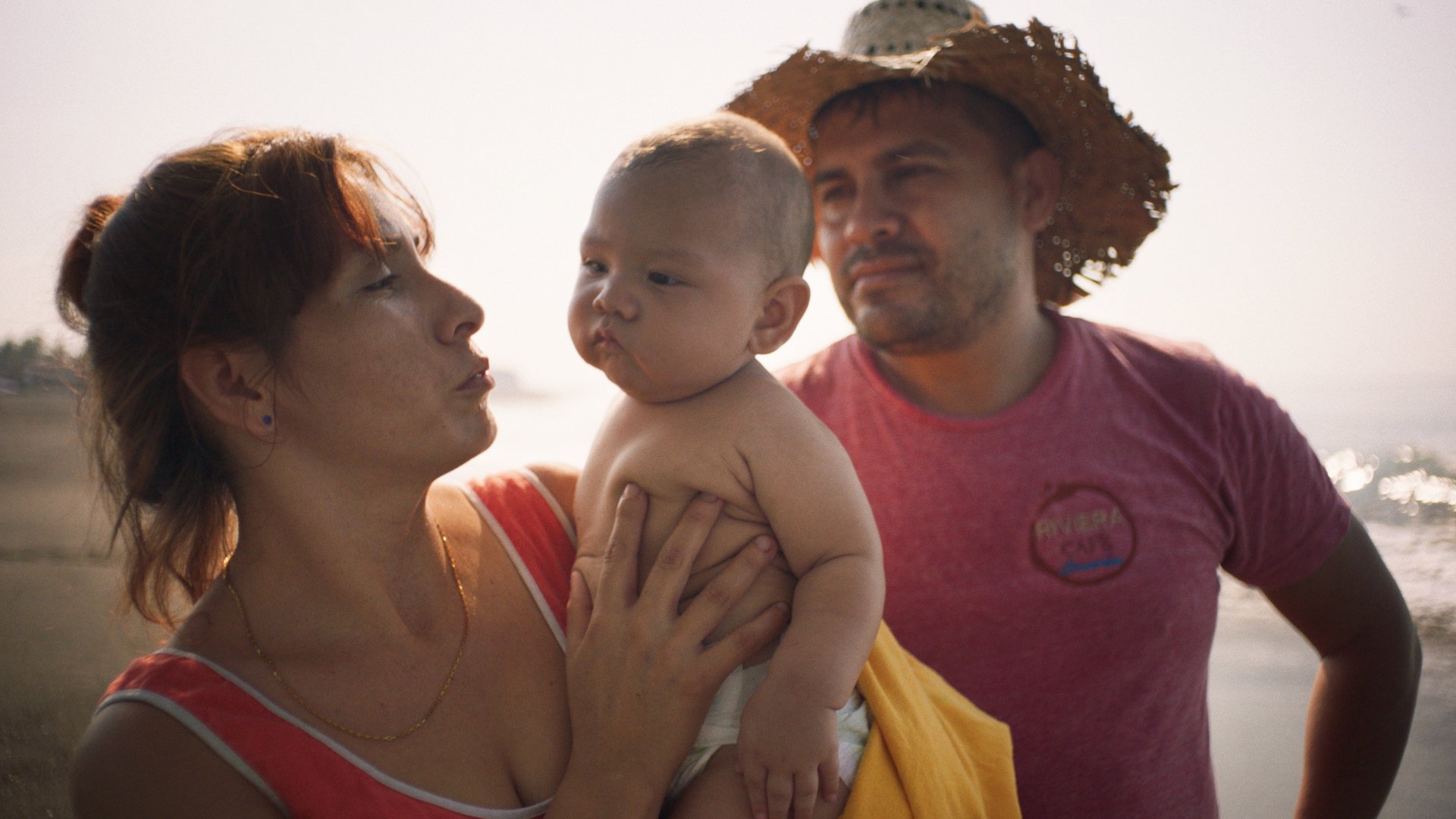Sanson and Me (2022) Tribeca Review: In 2012, on his first murder trial as an interpreter in California, director Rodrigo Reyes witnessed a 19-year-old Mexican kid named Sanson, getting sentenced to life imprisonment without the possibility of parole. To Reyes, it was a crushing experience, a moment of disbelief at the justice system’s utter lack of the least bit of humanity as it ruined a young man’s life without a second thought. What struck him, even more, was how little he knew about Sanson, this boy he sat next to for 3 weeks while his fate was being decided. Owing to legal restrictions, he couldn’t befriend him or hear his end of the story except by translating whatever he heard him say on the stand, could not interject and ask him to change his statements if they were susceptible to wrong interpretations by the jury, hence resigned to the curse of the messenger.
The film ‘Sanson and Me’ came together as an attempt to tell Sanson’s story, the part which the law doesn’t care about, that being the truth of his life, which he gathered through a written correspondence with Sanson, amounting to some 900 written letters over the course of nearly a decade. What this also led to was the forging of a most sympathetic friendship between two men, Reyes and Sanson, sharing their extremely different personal yet somehow terribly similar public experiences as Mexican immigrants.
Related to Sanson and Me – Lift [2022]: ‘Tribeca’ Review – Inspiring Journeys from the Homeless Shelter to the Ballet Stage
Reyes’s attempt in itself is a formidable task, the desire to tell the truth about one from a plethora of such cases. When he reflects on how over the years he has seen many similar cases to Sanson’s, the question arises as to why then tell just Sanson’s story? Is it because this was the first case that Reyes handled? Or is there something he specifically noticed in him that other such cases didn’t have? And beyond such questions lies the greater difficulty of trying to present the truth through a film that is neither a documentary, nor a feature, but a mixture of the former’s desire to depict reality and the latter’s attempts at recreating it. This gives rise to a most interesting work of docufiction, compounded all the more by how it also is a reflection on filmmaking itself as the director places himself in the midst of the action.
Sanson’s family is used as the cast for the scenes depicting his childhood. His sister, Deborah, becomes his mother; his uncle becomes his father; his nieces are turned into his sisters while his nephew Tonito plays a young Sanson. This becomes a double-edged sword for the participants though, especially Deborah who has to participate in telling his brother’s story, someone she’ll possibly never see again, and also bring to life long-suppressed memories from their impoverished childhood. Also, Reyes is essentially working with a group of people who wish Sanson had never been incarcerated, thereby also wishing that this film itself never had to be made, hence bringing to the fore the deception behind the empathy the film is trying to bring to life. What it results in then is an honesty of a kind that even Reyes would not have imagined the film capable of having.
The letters exchanged between Reyes and Sanson serve as the overarching voice-over throughout the film while a stage and a screen replace the court of law and the judge’s table respectively whenever scenes of Reyes’s visits to Sanson, or the trial itself, are recreated. This Brechtian approach is a potent device in ensuring that the film’s own origin from a place of ambiguity is not erased in favor of the film turning into an immersive experience.
Also, Read – Subject [2022]: ‘Tribeca’ Review – A metatextual commentary on consent
There’s a dreamlike quality to the way Reyes depicts Mexico, especially the fishing village where Sanson was born and spent his childhood. Tragedies like his father’s death bring out the pain that has been a part and parcel of his entire life. On the other hand, the emaciated state of Deborah, from her drug addiction, as she portrays their dying mother or Tonito growing up in violent neighborhoods and thereby running the risk of facing Sanson’s fate shows the cyclical fatality of the working class.
In fact, this is the film’s greatest strength, how its portrayal of Sanson’s life is also a chilling reminder of the universality of these people’s struggles, the depiction of the difficulties faced by Sanson and people like him in Mexico as well as how few possibilities there are of alleviation even after they go north of the border. What Reyes had to say about the court of law not looking into Sanson’s life in deciding his fate for the rest of his life is indicted by these reflections as we realize how essential the society which molded an individual is, in understanding the ways they fell into. It’d be criminal to not refer to Jacobo Lieberman’s music, especially the airy theme that plays in most of the scenes showing Sanson’s childhood. A bittersweet piece that has an innate ability to evoke nostalgia, the theme evokes the very best of Santaolalla’s minimalistic, string-heavy works.
Where ‘Sanson and Me’ falters is when it makes its non-professional actors portray emotions obviously far beyond their abilities. It isn’t their fault as it is Reyes who feels they are capable of evoking strong feelings in the audience through their acting, which only exposes the fact that they’re not. A prime example is a dream sequence when a young Sanson lies over his parents’ graves and they appear in order to get a glance at their grief-stricken child, hence it requiring Deborah and Sanson’s uncle to conjure up expressions that seasoned thespians would struggle with. Despite what Reyes tells Sanson at the beginning about how the film isn’t an attempt to get him exonerated, the protracted reflections on the trial towards the end say otherwise as we’re made to question the nature of the crime and what really happened. It isn’t so much a negative as it is a resort to idealism in a film that otherwise, despite its lyrical style, has greatly stuck to pragmatism.
‘Sanson and Me’ is a moving work, made with an obvious desire to tell a story important to Reyes. Sanson’s passivity in his letters is heartbreaking as one is made to realize the ongoing loss of a beautiful mind. In its early moments, when one person’s words are portrayed through another person’s images, the latter coming to life through the former’s eyes, it positively echoes the works of Chris Marker. Yet its greatest strength is the lack of any fantasizing. It isn’t a work made to reconsider Sanson’s crimes or invoke public opinion against an apparent case of injustice. Nor is it about a remarkable life. And so in telling this story, Reyes upholds the fundamental facet behind making any film – to tell a story that is important, especially to the maker, and needs to be told for that reason alone.



![The Hound of The Baskervilles [1959] Review – The weirdest Sherlock Holmes Adaptation is also the best](https://79468c92.delivery.rocketcdn.me/wp-content/uploads/2021/05/The-Hound-of-the-Baskervilles-1959-highonfilms-2-768x443.jpg)
![Dragonfly Eyes [2017]: Locarno International Film Festival Review](https://79468c92.delivery.rocketcdn.me/wp-content/uploads/2017/08/dragonfly_eyes-h_2017-768x433.jpg)
![First Cow [2020] Review: Cerebral Food flick talks Cake & Capitalism](https://79468c92.delivery.rocketcdn.me/wp-content/uploads/2021/01/First-Cow-768x384.jpg)
![Dealer/Healer [2017]: NYAFF Review](https://79468c92.delivery.rocketcdn.me/wp-content/uploads/2017/07/Dealer-Healer-768x432.jpg)
![Lucky Chan-sil [2020] Review: A movie producer in an existential fix](https://79468c92.delivery.rocketcdn.me/wp-content/uploads/2020/09/Lucky-Chan-sil-Movie-Review-highonfilms-3-768x512.jpg)
![Eldorado [2018]: ‘BFI-LFF’ Review – A Potent and Unflinching Look at the Economics of the Refugee Crisis](https://79468c92.delivery.rocketcdn.me/wp-content/uploads/2018/10/Eldorado-2018-768x432.jpg)